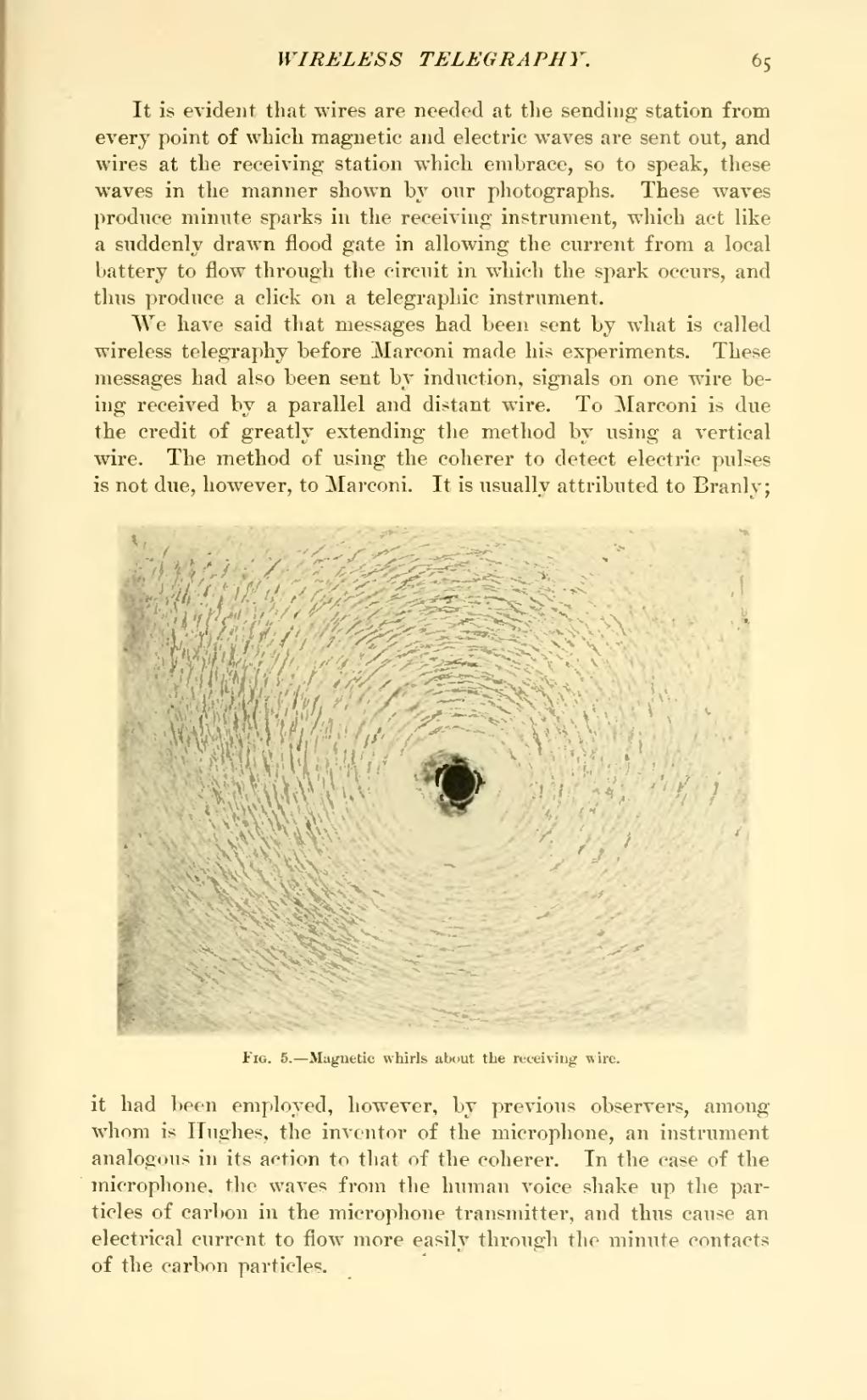It is evident that wires are needed at the sending station from every point of which magnetic and electric waves are sent out, and wires at the receiving station which embrace, so to speak, these waves in the manner shown by our photographs. These waves produce minute sparks in the receiving instrument, which act like a suddenly drawn flood gate in allowing the current from a local battery to flow through the circuit in which the spark occurs, and thus produce a click on a telegraphic instrument.
We have said that messages had been sent by what is called wireless telegraphy before Marconi made his experiments. These messages had also been sent by induction, signals on one wire being received by a parallel and distant wire. To Marconi is due the credit of greatly extending the method by using a vertical wire. The method of using the coherer to detect electric pulses is not due, however, to Marconi. It is usually attributed to Branly;

Fig. 5.—Magnetic whirls about the receiving wire.
it had been employed, however, by previous observers, among whom is Hughes, the inventor of the microphone, an instrument analogous in its action to that of the coherer. In the case of the microphone, the waves from the human voice shake up the particles of carbon in the microphone transmitter, and thus cause an electrical current to flow more easily through the minute contacts of the carbon particles.
